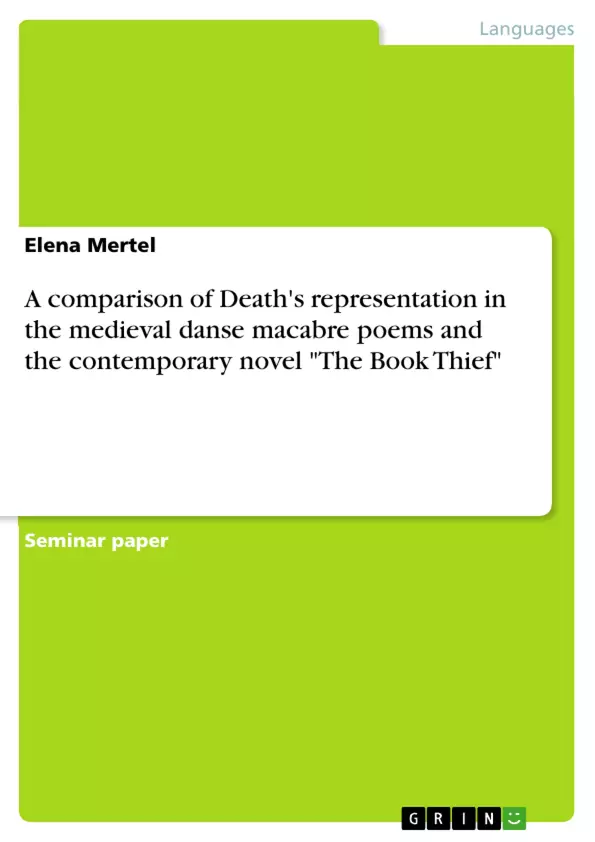To find answers to the following questions I will examine two representations of Death in literature in the following essay. First, I will refer to the medieval motif of the danse macabre with special attention on the German Totentanz and the French danse macabre poems that were freely translated into English by the monk John Lydgate in the beginning of the 15th century.
Already as early as in the Old Testament death was represented by the apocalyptic horsemen; In early Norse mythology by the goddess of Death named Hel and in the Middle Ages by skeletons that rose from their graves, as well as by the image of the Grim Reaper with his black cape and a scythe, which is still popular nowadays. What do those figures have in common? In what aspects do they differ? And in how far have the common interpretation of personified Death changed over the centuries?
Table of Contents
- Introduction
- Main part
- The Danse macabre
- Comparison: Death's representation in the danse macabre poems and the contemporary novel The Book Thief.
- Conclusion
- Works Cited
- Appendix
Objectives and Key Themes
This essay aims to analyze the concept of Death as an autonomous figure by comparing its representation in the medieval Danse macabre poems and the contemporary novel The Book Thief. It explores how Death has been portrayed in literature across different historical periods and how these portrayals reflect cultural and societal changes.
- Death as a literary motif across centuries
- Representation of Death in medieval and contemporary literature
- Cultural and societal influences on Death's portrayal
- Comparison of Death's characteristics in the Danse macabre and The Book Thief
- The evolution of the concept of death and its significance in literature
Chapter Summaries
- Introduction: This chapter introduces the concept of Death as a recurring figure in literature, tracing its evolution from the Old Testament and Norse mythology to modern representations. It highlights the enduring fascination with death and poses questions about its portrayal in different historical contexts.
- The Danse macabre: This chapter delves into the origins and significance of the Danse macabre motif during the Middle Ages, emphasizing the historical context of the Black Death and other societal factors that contributed to its emergence. It explores the recurring themes of mortality, resistance, and the acceptance of death within this motif.
- Comparison: Death's representation in the danse macabre poems and the contemporary novel The Book Thief: This chapter compares the portrayal of Death in the medieval Danse macabre poems with its representation in the contemporary novel The Book Thief by Markus Zusak. It examines how the concept of dancing is interpreted differently across these works and how these interpretations reflect cultural and societal changes.
Keywords
The key concepts explored in this essay include: Death as a literary motif, Danse macabre, Totentanz, medieval literature, contemporary literature, The Book Thief, Markus Zusak, cultural representation, societal influences, historical context, symbolism, allegory, and the evolution of death as a concept.
- Citar trabajo
- Elena Mertel (Autor), 2015, A comparison of Death's representation in the medieval danse macabre poems and the contemporary novel "The Book Thief", Múnich, GRIN Verlag, https://www.grin.com/document/464313



